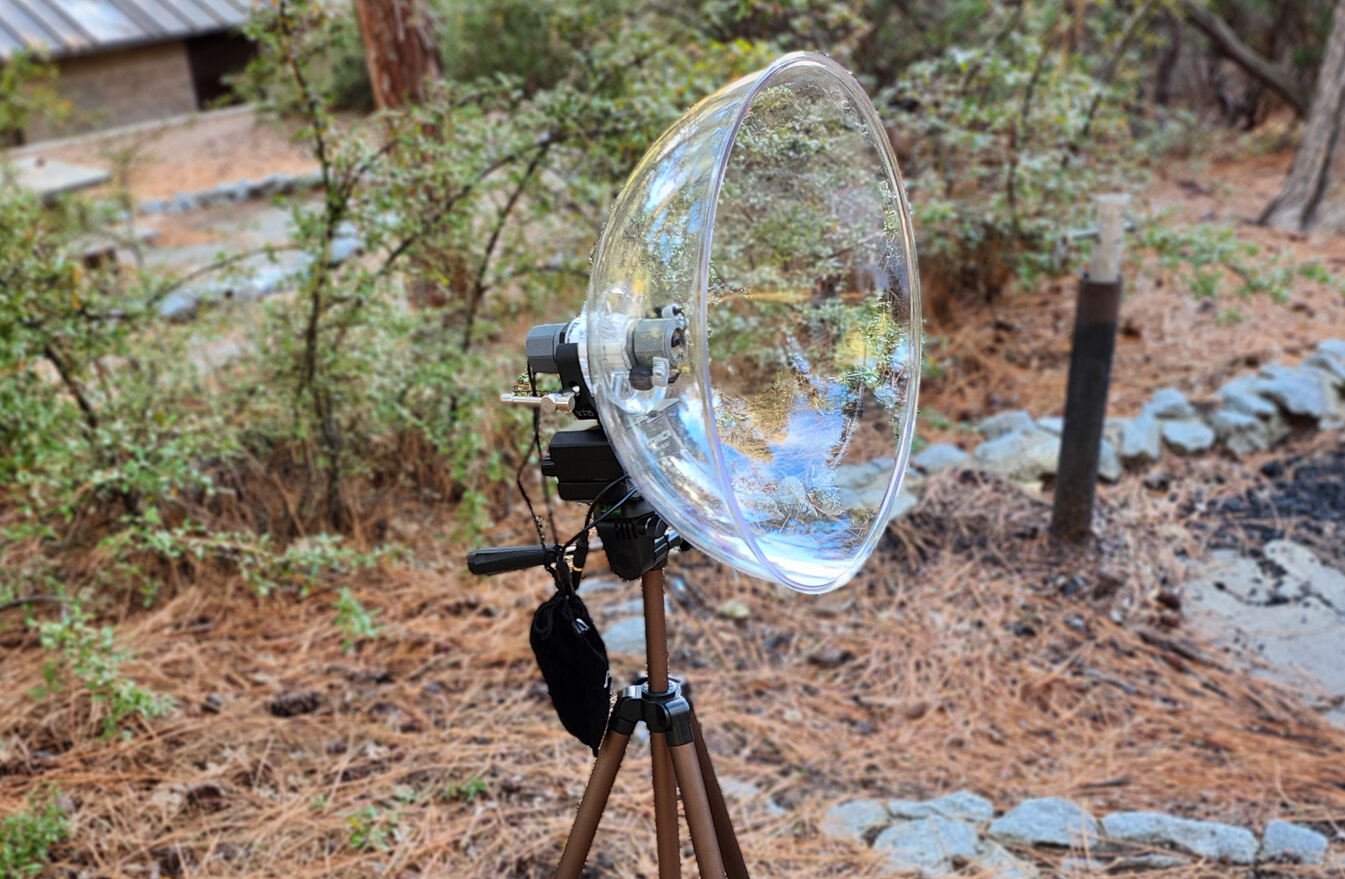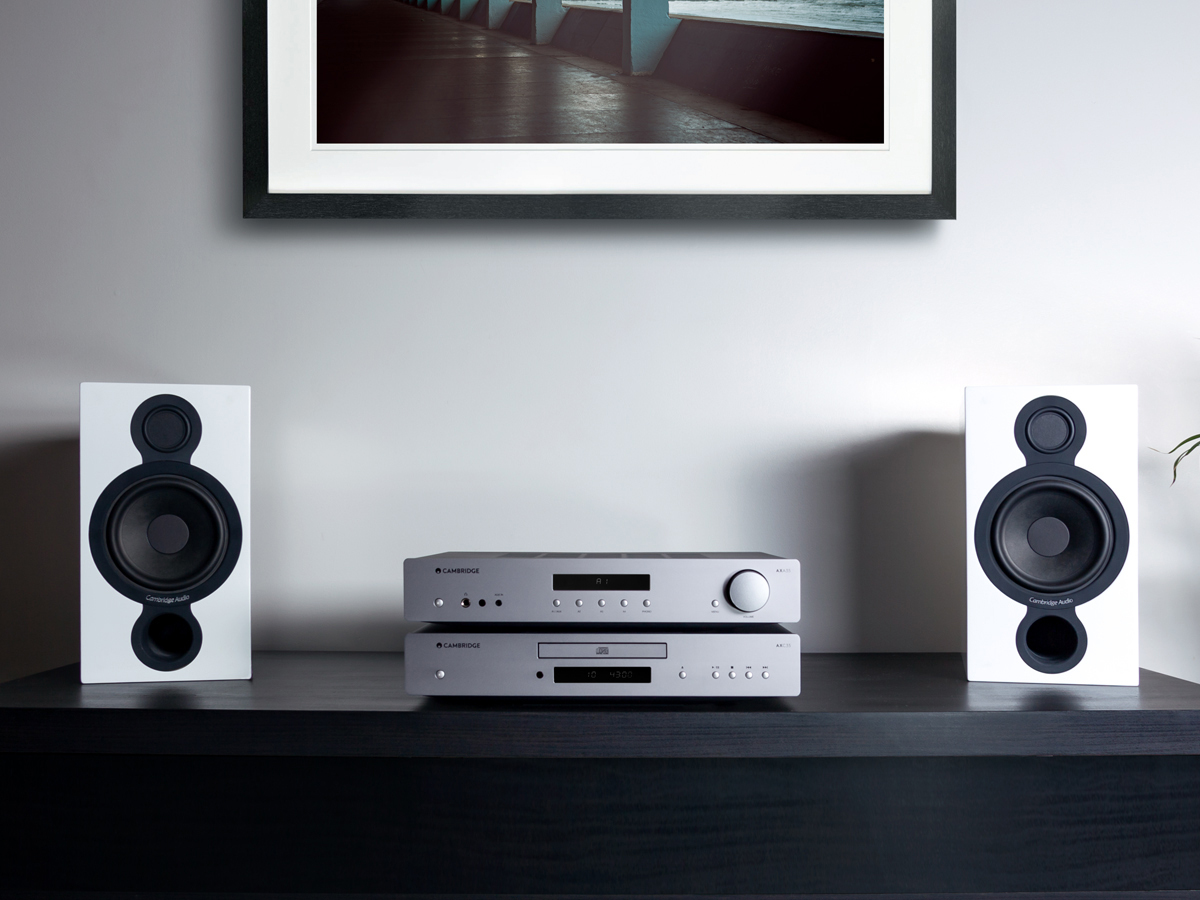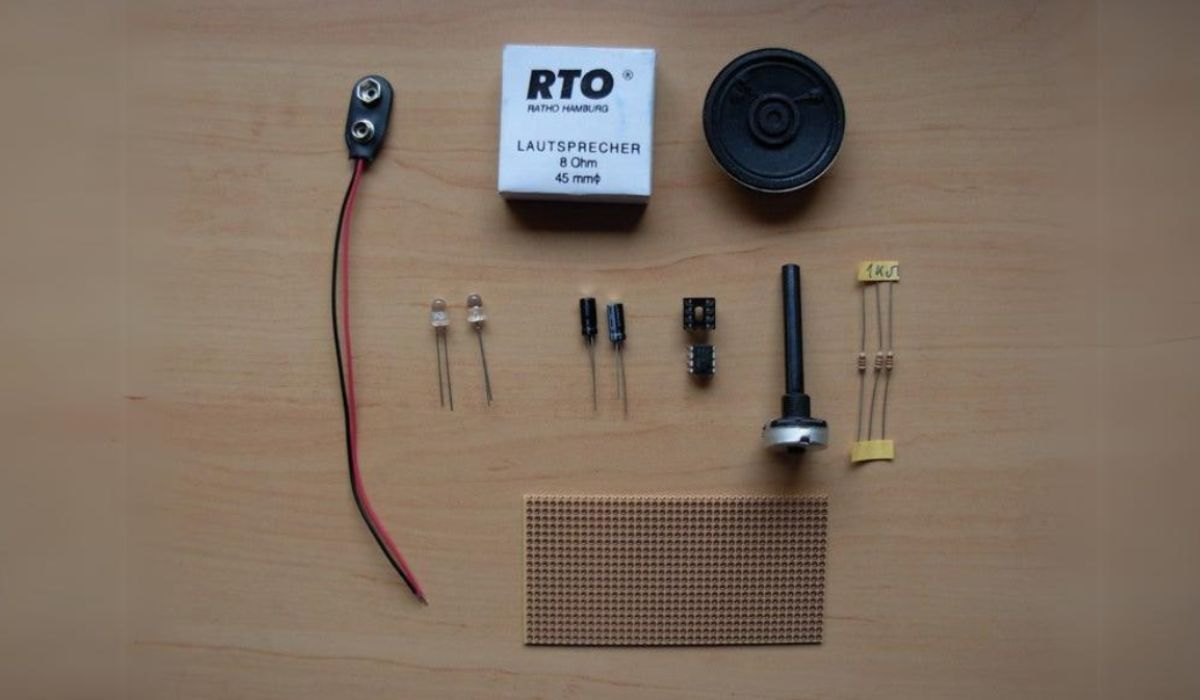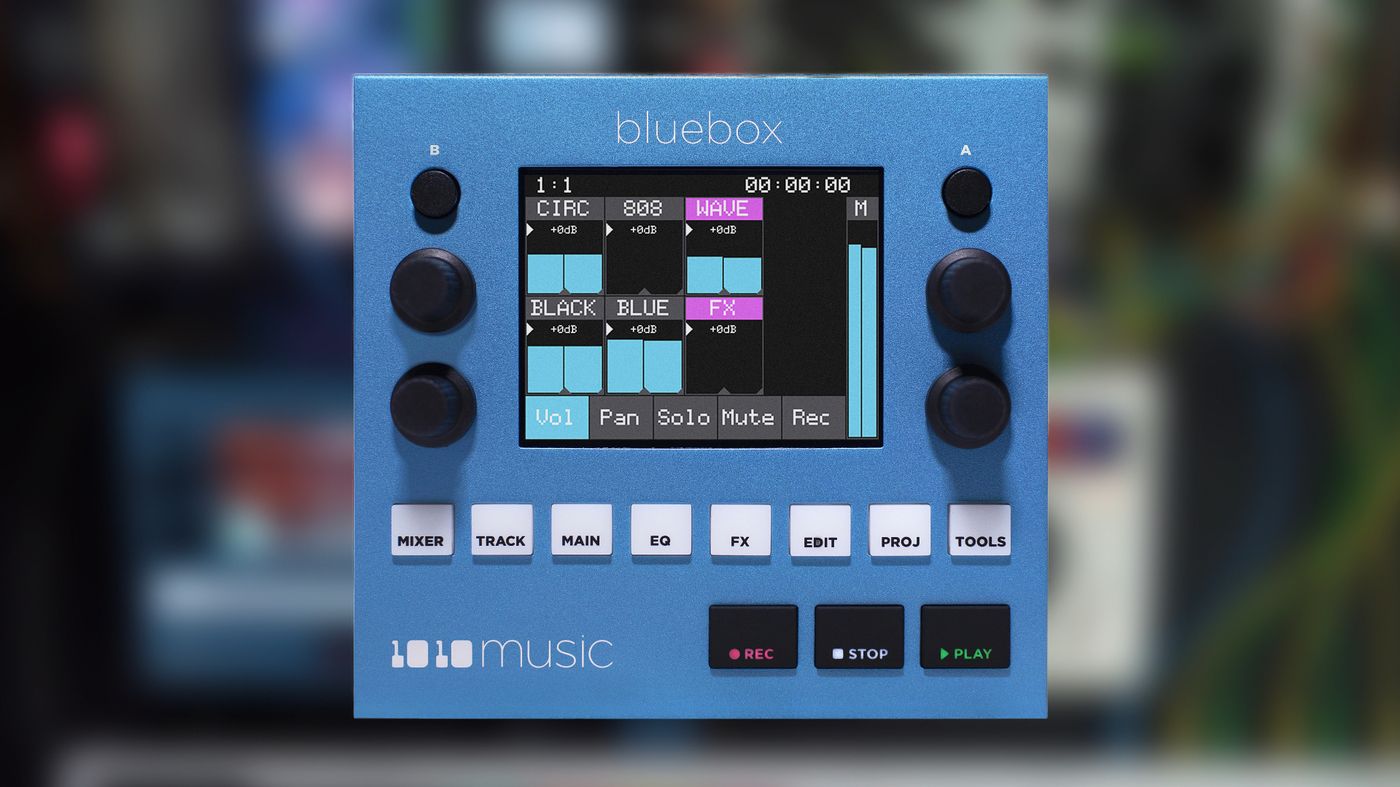Home>Devices & Equipment>Microphone>How To Build A Parabolic Microphone


Microphone
How To Build A Parabolic Microphone
Published: February 16, 2024
Learn how to build a parabolic microphone to enhance your audio recording capabilities. Discover tips and techniques for creating a powerful microphone. Ideal for capturing high-quality sound.
(Many of the links in this article redirect to a specific reviewed product. Your purchase of these products through affiliate links helps to generate commission for AudioLover.com, at no extra cost. Learn more)
Table of Contents
Introduction
Welcome to the fascinating world of parabolic microphones! Have you ever marveled at the way a parabolic microphone can capture sound from a distance with exceptional clarity? Whether you’re a nature enthusiast eager to record the subtle sounds of wildlife or a sound engineer aiming to capture pristine audio in a bustling environment, a parabolic microphone is an invaluable tool.
In this comprehensive guide, we will delve into the intricacies of building a parabolic microphone, providing you with the knowledge and skills to embark on this rewarding DIY project. By the end of this article, you will have a deeper understanding of the principles behind parabolic microphones, the materials required, and the step-by-step process of constructing and testing your very own parabolic microphone.
So, let’s embark on this exciting journey to uncover the secrets of parabolic microphones and equip ourselves with the expertise to harness their remarkable capabilities. Whether you’re a hobbyist, a professional, or simply a curious mind eager to explore the realms of audio technology, this guide is tailored to enrich your understanding and empower you to create a powerful parabolic microphone from scratch.
Understanding Parabolic Microphones
Before delving into the construction process, it’s crucial to grasp the fundamental principles that underpin the functionality of parabolic microphones. These specialized devices are designed to capture sound over long distances with exceptional precision, making them indispensable in various fields such as wildlife recording, sports broadcasting, and surveillance.
At the heart of a parabolic microphone lies the parabolic dish, which serves as the primary component responsible for gathering and focusing sound waves. When sound waves enter the dish, they are reflected and converge at a focal point, where the microphone is positioned to capture the concentrated sound. This unique design enables parabolic microphones to pick up distant sounds with remarkable clarity, effectively isolating the desired audio from ambient noise.
The dish’s parabolic shape is integral to its acoustic properties, allowing it to effectively collect and concentrate sound waves. The larger the dish, the greater the amplification and directivity of the captured sound. This phenomenon is harnessed in various applications, from eavesdropping on distant conversations to capturing the intricate vocalizations of elusive wildlife species.
Understanding the principles of parabolic microphones empowers enthusiasts and professionals alike to appreciate the intricacies of sound capture and amplification. By harnessing the unique properties of parabolic dishes, we can unlock the potential to capture pristine audio from afar, opening up a world of possibilities in audio recording and surveillance.
Materials Needed
Embarking on the journey to build a parabolic microphone requires a selection of essential materials to bring your project to fruition. Here’s a comprehensive list of the items you’ll need to construct your very own parabolic microphone:
- Parabolic dish: The primary component of the parabolic microphone, the dish can be crafted from materials such as lightweight plastic or aluminum. The dish should have a smooth, reflective surface to effectively concentrate sound waves.
- Microphone: A high-quality, sensitive microphone is essential for capturing the focused sound gathered by the parabolic dish. Select a microphone known for its clarity and ability to capture distant audio.
- Mounting hardware: To secure the microphone to the focal point of the parabolic dish, you’ll need mounting hardware such as a shock mount or custom bracket.
- Audio recorder or amplifier: A reliable audio recorder or amplifier is necessary to capture and process the audio signal captured by the microphone.
- Connecting cables: High-quality cables to connect the microphone to the audio recorder or amplifier are essential for maintaining signal integrity and minimizing interference.
- Tools: Various tools such as drills, screwdrivers, and adhesives will be required for assembling and mounting the components of the parabolic microphone.
By gathering these materials, you will be well-equipped to embark on the construction of your parabolic microphone. With careful selection and attention to detail, these components will form the foundation of a powerful and versatile sound capture device, ready to unveil the intricacies of distant audio with exceptional clarity.
Building the Parabolic Dish
The construction of the parabolic dish forms the cornerstone of building a functional parabolic microphone. Crafting a smooth, precisely shaped dish is essential for effectively capturing and focusing sound waves. Here’s a step-by-step guide to building the parabolic dish:
- Choose the Material: Select a lightweight and rigid material for the dish, such as plastic or aluminum. Ensure that the material is capable of maintaining a smooth, reflective surface to optimize sound wave concentration.
- Forming the Parabolic Shape: To create the parabolic curve, you can employ various methods, such as molding the material to the desired shape or cutting and shaping it to form the parabolic curve. Precision is crucial in achieving the desired acoustic properties of the dish.
- Surface Refinement: Once the parabolic shape is formed, meticulously refine the surface to ensure it is smooth and reflective. This step is vital for the dish to effectively concentrate sound waves at the focal point.
- Mounting the Microphone: Determine the focal point of the parabolic dish, where sound waves converge. Mount the microphone at this focal point, ensuring it is securely positioned to capture the concentrated sound.
- Testing and Refinement: After assembling the parabolic dish and mounting the microphone, conduct thorough testing to assess the performance of the sound capture. Make adjustments as necessary to optimize the dish’s acoustic properties.
By meticulously constructing the parabolic dish with precision and attention to detail, you will create a powerful tool for capturing distant audio with exceptional clarity. The parabolic shape, when crafted with care, will harness the acoustic principles that enable the microphone to excel in isolating and focusing sound waves, opening up a world of possibilities for audio capture and exploration.
Mounting the Microphone
Mounting the microphone at the focal point of the parabolic dish is a critical step in the construction process, as it directly influences the microphone’s ability to capture and concentrate sound waves. Proper mounting ensures that the microphone is positioned to intercept the converging sound waves, maximizing the device’s effectiveness in capturing distant audio. Here’s a detailed guide to mounting the microphone on the parabolic dish:
- Locate the Focal Point: Identify the focal point of the parabolic dish, where the reflected sound waves converge. This point is crucial for positioning the microphone to capture the concentrated sound effectively.
- Mounting Hardware: Select suitable mounting hardware, such as a shock mount or custom bracket, to securely affix the microphone at the focal point. The chosen hardware should provide stability and minimize vibrations that could affect sound capture.
- Positioning the Microphone: Carefully position the microphone at the focal point, ensuring that it is aligned to intercept the concentrated sound waves. Secure the microphone in place using the chosen mounting hardware, taking care to maintain its orientation and stability.
- Adjustment and Calibration: Fine-tune the position of the microphone to optimize its alignment with the converging sound waves. This step may involve slight adjustments to achieve the most precise capture of distant audio.
- Securing the Setup: Once the microphone is correctly positioned and aligned, secure the mounting hardware to prevent any movement or displacement during use. This ensures the stability of the microphone and its ability to consistently capture focused sound.
By meticulously mounting the microphone at the focal point of the parabolic dish, you will optimize the device for capturing distant audio with exceptional clarity. The precision and care taken in this step directly contribute to the microphone’s ability to harness the acoustic principles of the parabolic dish, enabling it to excel in isolating and focusing sound waves with remarkable precision.
Testing and Adjusting the Parabolic Microphone
Upon completing the construction of the parabolic microphone, thorough testing and adjustment are essential to ensure optimal performance and the accurate capture of distant audio. This critical phase allows you to fine-tune the microphone’s setup and make necessary adjustments to maximize its effectiveness. Here’s a comprehensive guide to testing and adjusting your parabolic microphone:
- Sound Capture Test: Conduct initial sound capture tests in various environments to assess the microphone’s performance. Listen to the recorded audio to evaluate the clarity and precision of distant sound capture.
- Background Noise Analysis: Analyze the recorded audio to identify and mitigate any unwanted background noise that may affect the clarity of the captured sound. Adjust the microphone’s positioning and sensitivity to minimize ambient interference.
- Range and Directionality Assessment: Test the microphone’s range and directionality by capturing audio from varying distances and angles. Evaluate its ability to isolate and focus on specific sound sources while minimizing extraneous noise.
- Acoustic Refinement: Fine-tune the parabolic dish’s shape and surface to optimize its acoustic properties. This may involve further smoothing and shaping to enhance the concentration of sound waves at the focal point.
- Microphone Sensitivity Calibration: Adjust the microphone’s sensitivity and gain settings to achieve the optimal balance between capturing distant sound and minimizing unwanted noise. Fine-tune these settings based on the specific audio capture requirements.
- Field Testing: Take the parabolic microphone into real-world scenarios, such as outdoor environments or live events, to assess its performance in practical applications. Make note of any adjustments needed to adapt to different soundscapes.
By rigorously testing and adjusting the parabolic microphone, you will fine-tune its setup to excel in capturing distant audio with exceptional precision. The iterative process of testing and refinement allows you to optimize the microphone’s performance, ensuring that it fulfills its potential in isolating and focusing on distant sound sources while maintaining clarity and fidelity.
Conclusion
Congratulations on embarking on the journey to build your very own parabolic microphone! Through this comprehensive guide, you have gained valuable insights into the principles, construction, and optimization of parabolic microphones, empowering you to capture distant audio with exceptional clarity. As you conclude this enriching endeavor, it’s essential to reflect on the significance of your newfound expertise and the potential applications of your parabolic microphone.
By understanding the acoustic principles that underpin parabolic microphones, you have unlocked the ability to harness sound waves with precision, isolating and focusing on distant audio sources. The construction process has equipped you with the skills to craft a finely tuned parabolic dish and mount a sensitive microphone at its focal point, creating a powerful tool for capturing pristine audio from afar.
As you venture into testing and adjusting your parabolic microphone, you will refine its setup to excel in real-world applications, whether it’s capturing the intricate sounds of nature, amplifying distant voices in broadcasting, or conducting surveillance with exceptional clarity. The iterative process of testing and refinement ensures that your parabolic microphone is optimized to meet the demands of diverse audio capture scenarios.
Ultimately, the journey to build and optimize a parabolic microphone transcends the technical construction process. It represents a gateway to unlocking the nuances of sound, allowing you to explore and capture the rich tapestry of audio in its purest form. Whether you’re a nature enthusiast, a sound engineer, or a curious explorer of audio technology, your parabolic microphone stands as a testament to your ingenuity and passion for capturing the beauty of sound.
As you venture forth with your newly constructed parabolic microphone, may it serve as a conduit for unraveling the mysteries of distant audio and amplifying the subtle whispers of the world around us. Embrace the potential of your creation and continue to explore the realms of audio capture with boundless curiosity and creativity.











